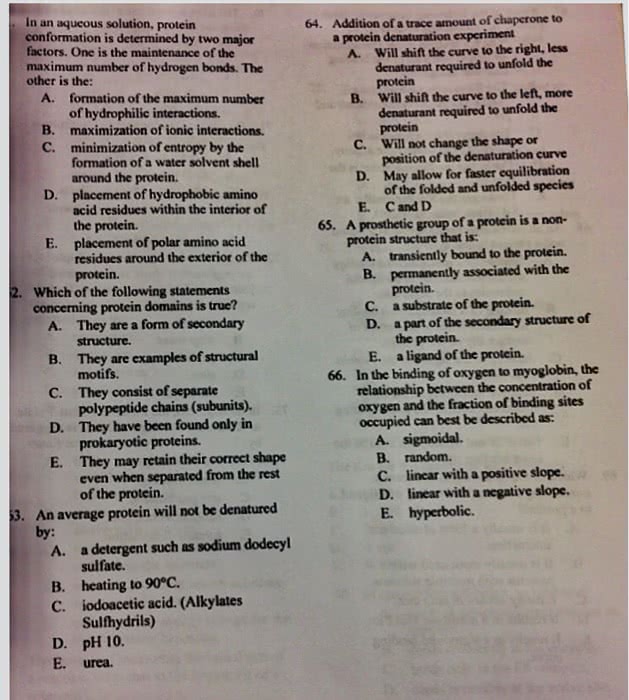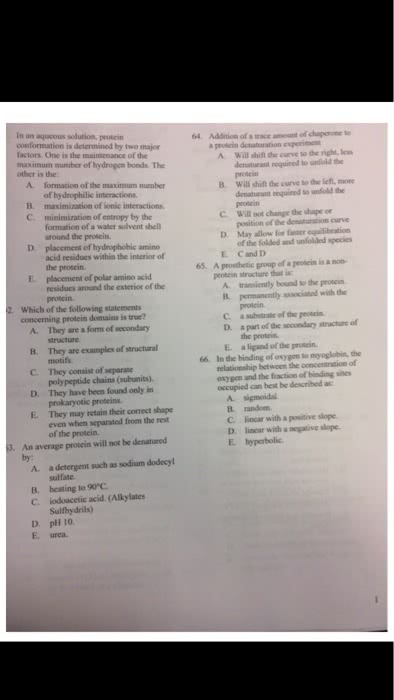BCH 119S Lecture Notes - Lecture 7: Heat Shock Protein, Peptide, Christian B. Anfinsen
53 views2 pages
22 Dec 2016
School
Department
Course
Professor
Document Summary
The driving force for folding globular proteins is to - pack the hydrophobic residues into the core of the interior; creating a hydrophobic core and hydrophilic surface. T or f: there are some charged and polar residues in the core and some nonpolar residues accessible to water. The side chains are 5% or more accessible to water. Folded tertiary structures can be stabilized by disulfide bonds formed btwn. What kind of forces come into play to help stabilize tertiary structure? hydrophobic and vdw interactions in interior hydrophilic interactions at protein surface w/ water ionic interactions at protein surface w/ counter ions. Name some examples - frequently occuring arrangments of secondary structure. usually just makes up part of the tertiary structure. ex: helix-loop-helix, coiled coil, hairpin. Large independently folding regions of proten structure. T or f: some proteins can contain multiple polypeptide constituents. The arrangement of polypeptide in domains is called the ____________.
Get access
Grade+20% off
$8 USD/m$10 USD/m
Billed $96 USD annually

Homework Help
Study Guides
Textbook Solutions
Class Notes
Textbook Notes
Booster Class
40 Verified Answers
Class+
$8 USD/m
Billed $96 USD annually

Homework Help
Study Guides
Textbook Solutions
Class Notes
Textbook Notes
Booster Class
30 Verified Answers

